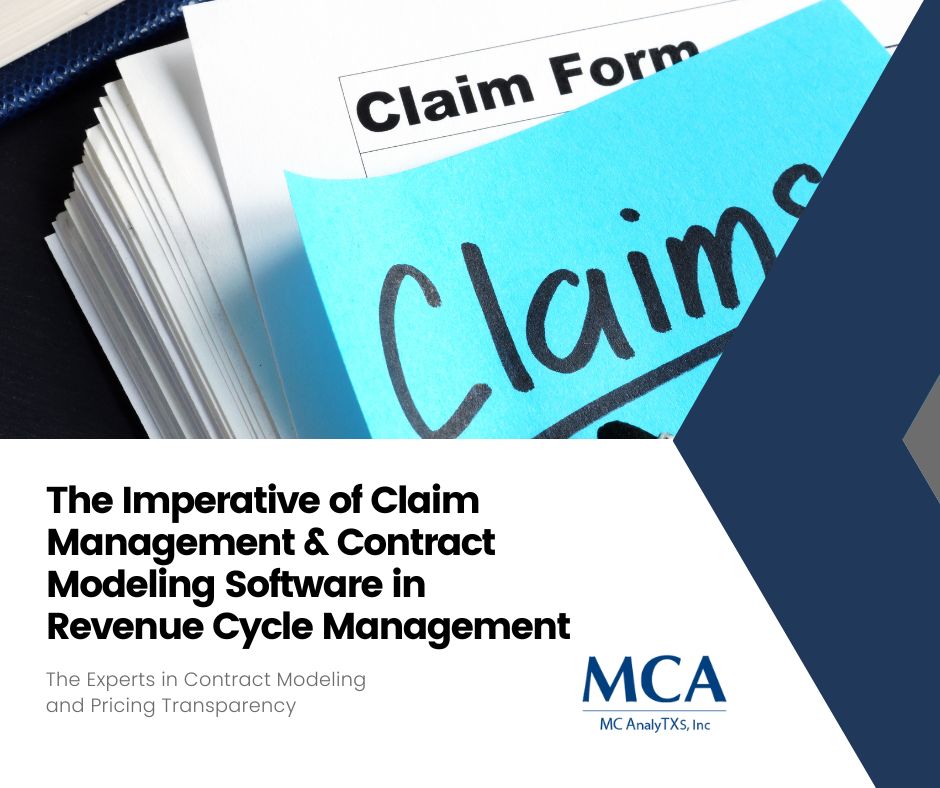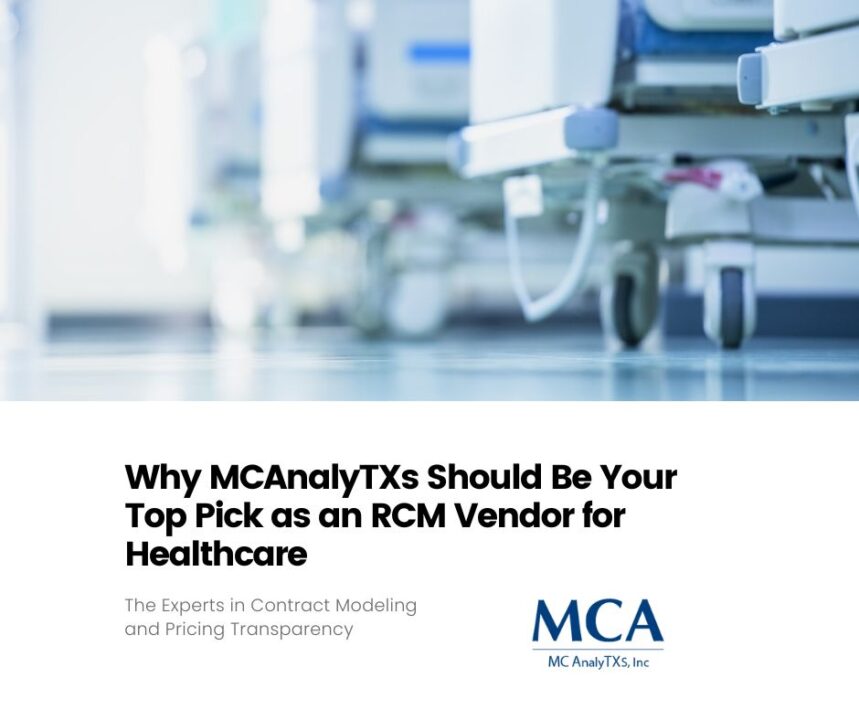
How to Choose the Right RCM Tool for Your Healthcare Organization
March 6, 2024
Accelerated Medicare Payments: Impact and Implications
March 11, 2024The Imperative of Claim Management & Contract Modeling Software in Revenue Cycle Management
In the complex world of healthcare, efficiency is key to navigating not just the day-to-day operations but also the intricate financial labyrinth that is the revenue cycle. For those at the helm of Revenue Cycle Management (RCM), optimizing each phase of the cycle is not just about improving operations; it’s about ensuring the financial well-being of the healthcare organization as a whole. In this article, we will explore why integrating advanced Claim Management and Contract Modeling Software Solutions is a fundamental move for health systems looking to streamline their revenue cycle and secure sustainable growth in an uncertain market.
The Revenue Cycle Management Landscape
Before we plunge into the benefits of advanced software solutions, it’s essential to understand the challenges that are inherent to Revenue Cycle Management. The healthcare industry is notorious for its evolving regulatory framework, stringent compliance requirements, and a multitude of payer-specific rules. These factors, combined with the already complex nature of patient billing and operational intricacies, often make revenue cycle management a daunting task.
Traditionally, healthcare providers have relied on manual processes, disparate systems, and a significant amount of human intervention to manage the various stages of the revenue cycle. However, as the industry moves towards value-based care and as payer-provider relationships become more collaborative yet complex, the inadequacies of these older methods become starkly apparent.
Navigating Complexity with Software Solutions
To simplify and enhance the management of claims and contracts, Claim Management and Contract Modeling Software Solutions are rising as indispensable tools for RCM departments. These systems are designed to automate and optimize the core tasks of billing, reimbursement, and contract management. Their integration not only helps in achieving operational efficiencies but also enables healthcare organizations to meet industry standards and improve overall financial performance.
Benefits of Implementing Claim Management Software
Claim Management Software solutions work by automating the process of submitting, managing, and tracking claims from various payers. The benefits of integrating such software include:
Improved Claims Accuracy and Efficiency
Automated claim submissions result in fewer errors and reduced rejections, ultimately leading to quicker reimbursements. These solutions also have built-in checks that ensure claims are compliant with payer requirements.
Enhanced Revenue Cycle Performance
Faster claim processing means a reduced time to payment, resulting in improved cash flow — a central pillar of a robust revenue cycle strategy.
Streamlined Billing and Coding Processes
By integrating with coding and billing systems, Claim Management Software ensures that claims are complete and accurate before submission, which minimizes the need for costly rework and appeals.
Benefits of Integrating Contract Modeling Software
Contract Modeling Software solutions focus on the management of payer contracts by facilitating strategic planning and analysis. The advantages of these systems are just as critical in the RCM domain:
Efficient Contract Negotiations
With the ability to model and simulate various contract scenarios, providers can enter negotiations better informed and equipped to secure more favorable terms.
Improved Contract Compliance
Claims are checked against the terms of payer contracts, ensuring compliance and thus maximizing reimbursements in accordance with agreements.
Enhanced Revenue Forecasting
By providing tools for advanced analytics, Contract Modeling Software allows providers to forecast revenue more accurately, which is indispensable in setting operational targets and strategic planning.
Integration of Claim Management & Contract Modeling Software
By integrating these two software systems, healthcare organizations can establish a continuous feedback loop between the claims being processed and the contracts being negotiated, thereby optimizing revenue cycle operations. This integration fosters a collaborative environment and empowers decision-makers with insights that cut across traditionally siloed departments.
Synergies Between the Two Systems
Claim Management and Contract Modeling are not isolated operations; they are interdependent. When integrated, contract data can inform claims processing, and claim data can inform contract negotiations. This bi-directional flow of information is invaluable in revenue optimization.
Streamlining Revenue Optimization
Together, these integrated systems offer a comprehensive approach to revenue cycle management — from the point of patient care to the settlement of claims. They provide visibility into the complete lifecycle of revenue, allowing for proactive management and the continual improvement of processes.
Challenges in Implementing Claim Management & Contract Modeling Software
While the benefits of implementing advanced software are substantial, it’s important to acknowledge the challenges that come with such a transition.
Data Integration Issues
One of the biggest hurdles in software integration is harmonizing data from various systems and sources. Data from EMRs, ERPs, and other disparate systems need to be structured and normalized for the integrated software to function effectively.
Training Requirements
The success of any software deployment hinges on the ability of its users to leverage its full potential. Comprehensive training and change management strategies are crucial in ensuring that staff can adapt to new systems and processes.
Cost Considerations
The upfront costs of implementing new software can be significant, and budget allocations for IT projects are often scrutinized against other operational needs. However, it’s important to look beyond upfront costs and consider the long-term savings and revenue opportunities that these solutions offer.
Conclusion
The landscape of revenue cycle management in healthcare is evolving, and advanced software solutions are at the forefront of this transformation. Claim Management and Contract Modeling Software are not just tools to increase operational efficiency; they are strategic assets that have a direct impact on your organization’s financial health.
For healthcare providers looking to stay competitive and fulfill their mission in delivering quality care, prioritizing the integration of advanced software solutions should be a critical part of their long-term strategy. In doing so, they will not only optimize their revenue cycle but also establish a platform for growth in an industry where change is the only constant.
Ready to take control of your revenue cycle? Contact us today to learn about how our integrated Claim Management and Contract Modeling solutions can empower your organization.
Remember, in the dynamic landscape of healthcare, those who adapt and innovate are the ones who thrive. It’s time to take your revenue cycle management to the next level with advanced software solutions.





